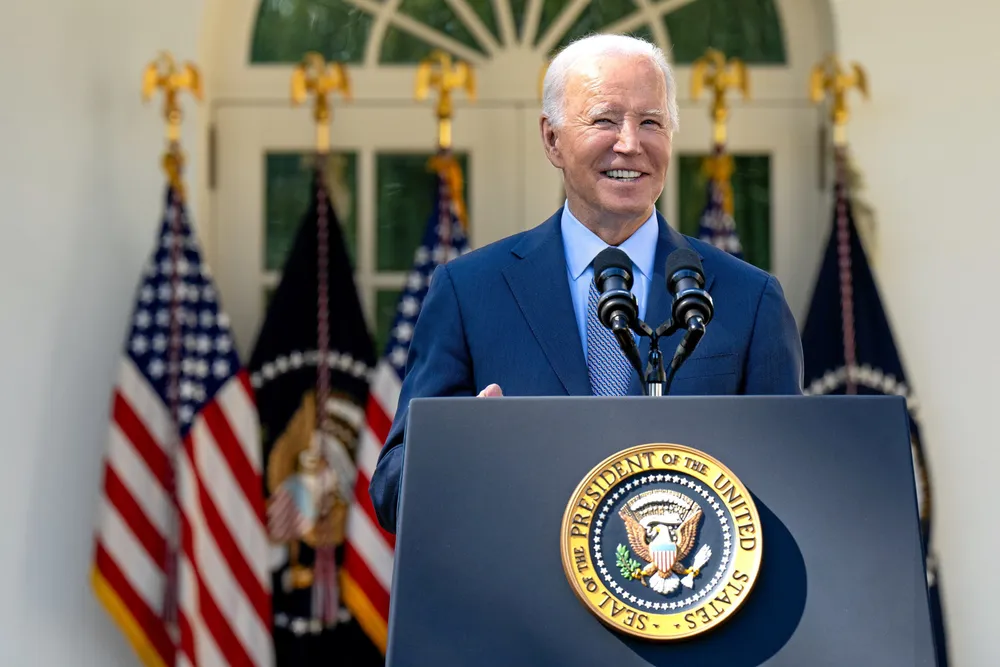Departing Biden bans offshore oil and gas as wind awaits fate under Trump
Lame duck president wields substantial power to protect American coastlines, but actual at-sea leasing will likely shift under incoming administration

In the waning days of his presidency, Joe Biden has taken decisive action to protect the US Atlantic and Pacific coastlines with an executive order withdrawing some 625 million acres (2.5 million square km) from oil and gas development.
The ban on new drilling would affect most of the Atlantic and Pacific coastlines as well as parts of the eastern Gulf of Mexico and the Northern Bering Sea off Alaska.
“President Biden’s actions today are part of our work across this Administration to make bold and enduring changes that recognise the impact of oil and gas drilling on our nation’s coastlines,” said Secretary of the Interior Deb Haaland.
While most executive orders could easily be rescinded by the following president, Biden’s ban will be difficult for the incoming administration of pro-fossil fuels Donald Trump to unwind due to requirements of the Outer Continental Shelf Lands Act (OCSLA) of 1953.
OCSLA gives a sitting president wide latitude in protecting US waters but requires an act of Congress to revoke them, which may present challenges as offshore oil & gas development is highly unpopular in most coastal states and Trump issued a similar ban during his first term.
Virtually all offshore oil and gas development is in the central and western Gulf of Mexico. Those areas were not included in Biden's executive order, which mostly covers regions that are not under consideration by the fossil fuel industry.
Ron Neal, president of Houston Energy and offshore chair of the Independent Petroleum Association of America, said: “The policy is catastrophic for the development of new areas for oil and natural gas but, the environmentalists will eventually look to also shut down offshore wind farms for most of the same reasons.”
Offshore wind
The Biden administration put environment and climate at the heart of its agenda over the past four years that included a 100% clean energy grid by 2035 towards net-zero emissions by 2050.
Offshore wind played a prominent role in these ambitions, with the administration aiming for 30GW of operating capacity by 2030 and 110GW by 2050.
While economic conditions and a sluggish permitting regime conspired to limit the sector’s ramp to less than half the target according to most analysts, the administration’s efforts to curtail oil and gas may also hinder offshore wind due to requirements in landmark climate legislation the Inflation Reduction Act (IRA).
Earlier this year, BOEM released its offshore wind leasing schedule that includes 12 rounds through 2029.
These rounds will all need to occur within a year of the latest oil & gas auction, now slated for 2025, 2027 and 2029.
While the Department of the Interior considers three oil & gas rounds sufficient “to continue issuing leases in a way that will ensure continued progress towards the Administration’s goal of 30 gigawatts of offshore wind by 2030”, the Congressional Research Service (CRS) is unsure.
“Because the programme schedules the Gulf sales once every two years rather than annually, it appears there would be periods during the five-year time frame when wind lease issuance would not be permitted under the IRA provisions,” CSR said in a report.
The last oil & gas round was held in December 2023, and offshore wind leasing is currently off the table until the next auction occurs sometime this year.
More critically, while OCSLA mandates that BOEM issue five-year schedules for both offshore oil & gas and wind leasing rounds, actual auctions are held at the pleasure of the administration, according to sources at the agency.
Trump is widely expected to slow or stop offshore wind leasing over the next four years.
(Copyright)